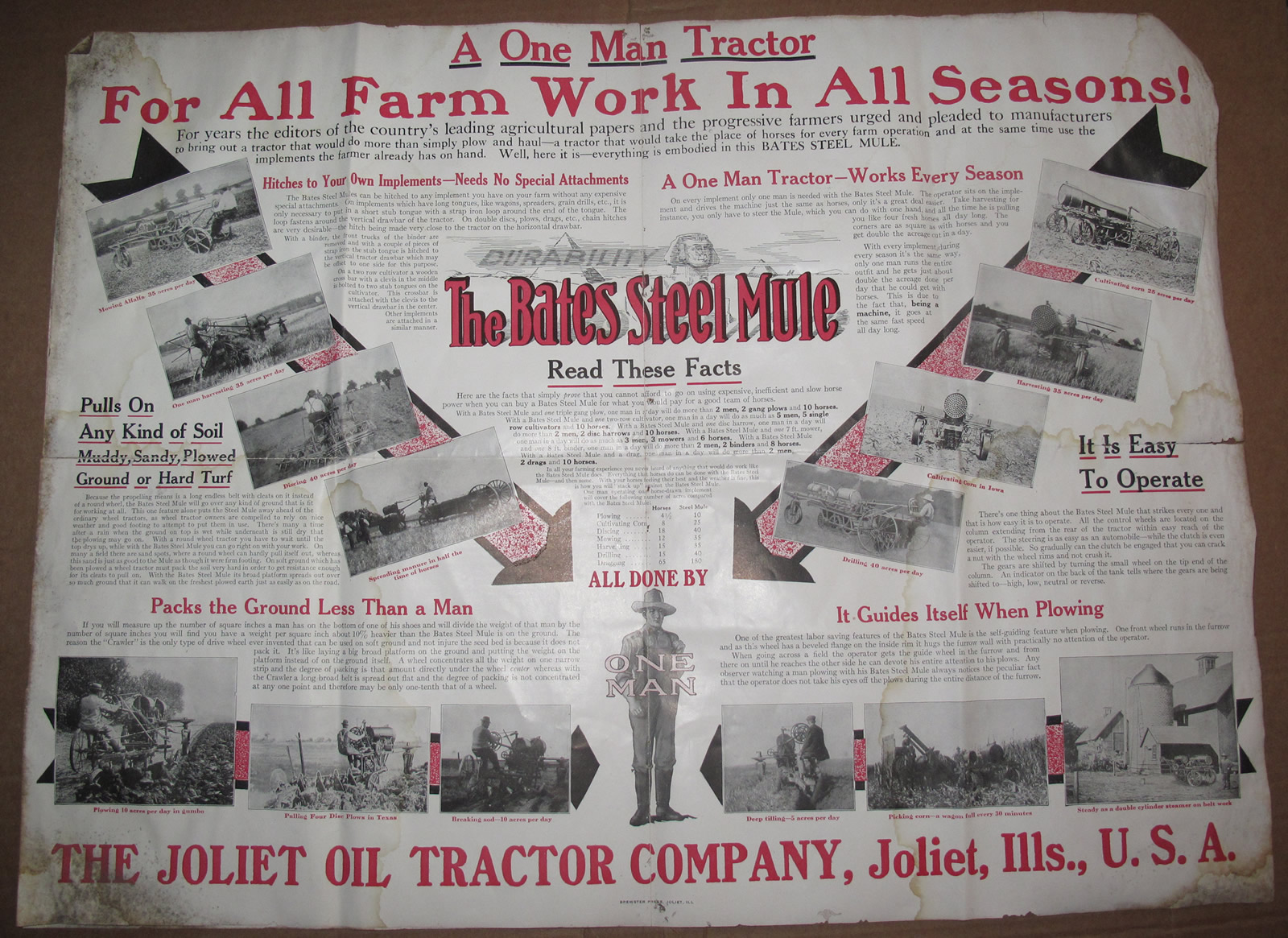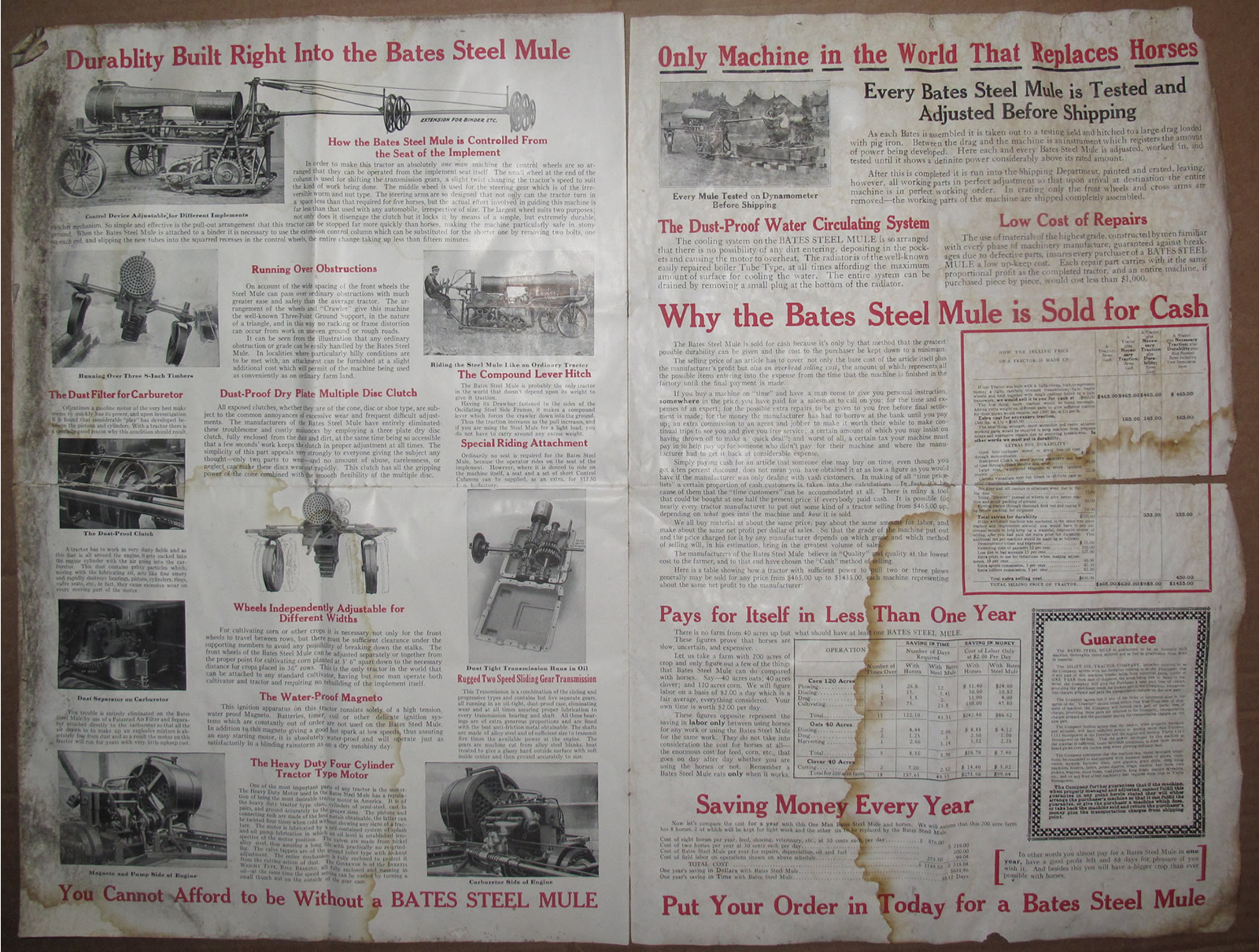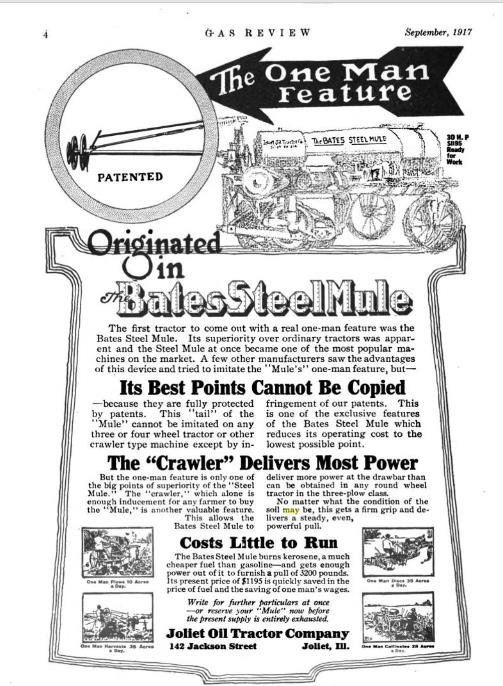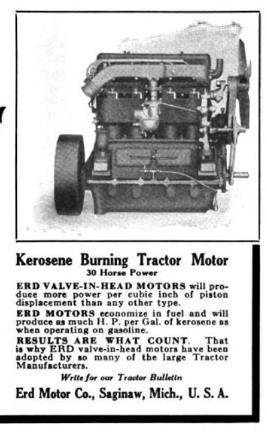First produced about 1913 the Bates Steel Mule was an odd looking tractor with two wheels set wide in front but only a single, low, crawler track centered under the rear. It was promoted as a powerful replacement for a team of horses when used to draw conventional horse-drawn farm machinery. It was advertised as able to go anywhere because of the rear track but there were complaints that it would tip over very easily on uneven ground because that track was so narrow. The original Mule was powered by a 4 cylinder, flat head motor advertised as producing 30hp.
In 1918, Bates began producing the tractor with two crawler tracks at the rear instead of one. This Model D used a 20hp, 4-cylinder Erd engine and a two-speed transmission.
By 1921, the heavier, Model F Steel Mule was introduced. Similar to the Model D this tractor used a 4 cylinder Midwest engine with overhead valves that was rated at 25hp. At times the Mule used other engines including Beaver and Leroi.
By 1925 they were also building more conventional full crawler tractors including some with 6-cylinger Waukesha engines. The factory finally closed in 1937.
UPDATE! - A FEW MULES DO STILL EXIST!
Here are photos of a fully restored MULE!
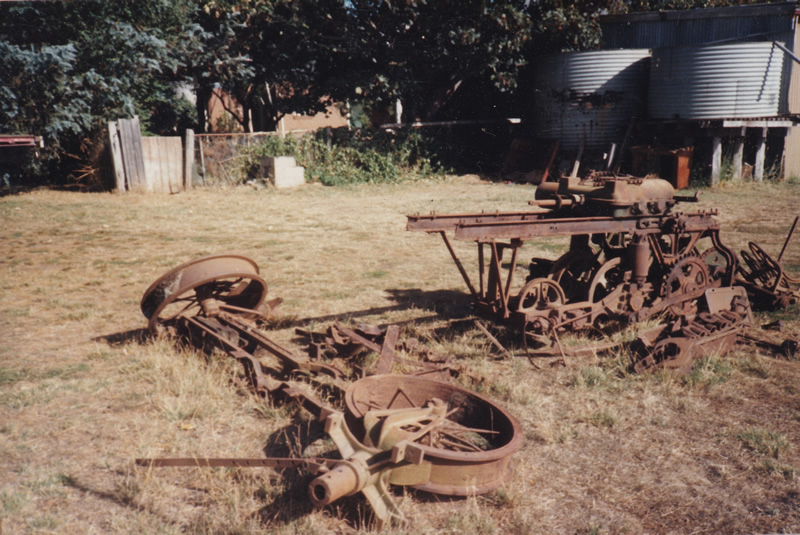 |
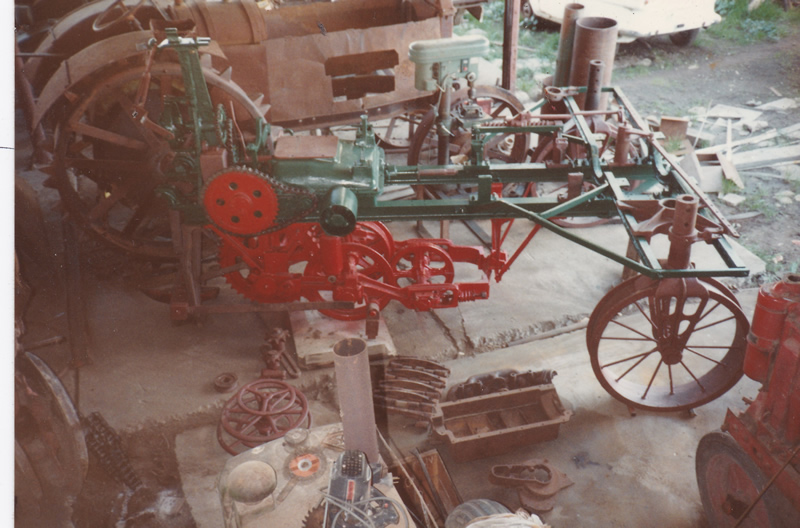 |
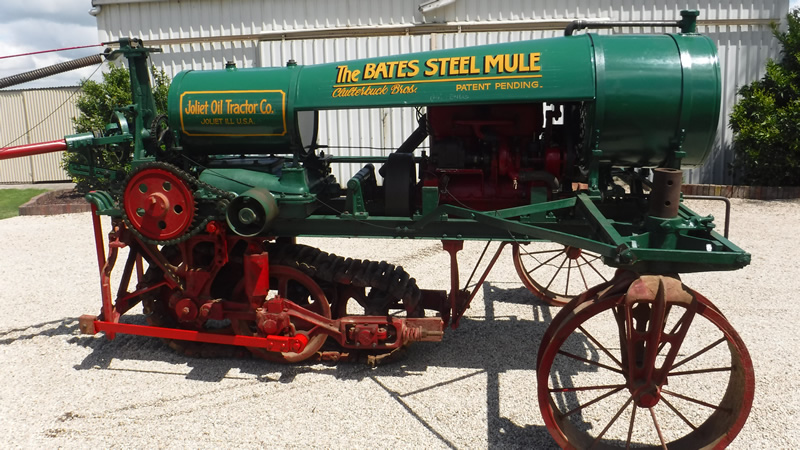 |
 |
This tractor has been saved and restored by two brothers living in Australia. Special thanks to Gary and Barb for sharing these great photos and allowing me to tell the story of their restoration project!
Barb in Australia found the Steel Mule brochure that I had posted on the web and has sent me the following photos and information.
Here are a few of the photos from the restoration of the Bates Steel Mule. My husband, Gary, bought it in 1983, found another engine in 1995 and made one up with what he had. It has been a very long drawn out process but he has nearly completed this as there is a show here he wants to display it at in November. He and his brother Jeff have a large collection of old tractors (over 150) as well as lots of other interesting things. Gary has also restored to working order a 1914 Holt/Caterpillar 75 which he has taken to many shows.
Gary writes;
My brother Jeff and I have over 200 tractors, cars, trucks, engines and other implements. Our father started collecting T model Fords in the 1960's and we have continued gathering equipment.
In Australia there are 4 Mules of this type that I have located. One running with a later type of Waukesha engine; an original, nearly complete tractor as a garden ornament; and mine - these are all model B tractors with the early Waukesha engine. And there is one model C with the Erd engine. It is disassembled but mostly there.
I have located about 6 of this model Bates Steel Mule in America and Canada and one in England.
My tractor was ordered by agents Clutterbuck Bros. in 1915. On the way to Australia it was diverted to France for the War, eventually arriving in Melbourne late 1918. Clutterbuck Bros. then had it in a tractor trial competing against local and other American tractors.
I have not found its history for the next few years, but a lady told me that, when she was a war bride in 1942, this tractor was a wreck. Her husband's brother bought it in the mid 1930's to plough peat and it broke down (looked like the mounting lugs in the engine crankcase broke out, I believe this was a problem with the flexing of the frame). She sold the farm in 1975. A collector/hoarder managed to save the Mule, and then I got it.
The green color is as close as I could match to the small amounts left in the crevices. I think they painted the track, control column and engine red to highlight the advanced technology and patents.
Below is the 1917 brocure that started my fascination with the STEEL MULE!
This beautiful old brochure was found in the attic of a circa 1908 home in Kingston, NY. Luckily a bunch of past homeowners never
bothered to pick it up and discard it. It was found lying face down so the last page is black and unreadable from so many years of
dust and dirt settling on it, but the inside is in great condition as shown in the accompanying photos. The new home owner was
thrilled to find this brochure almost 100 years after it was printed. If the model designation “nineteen seventeen” can be assumed to be the year of manufacture this brochure describes one of Bates’
early machines. A very complicated piece of machinery for such an early time in the tractor industry.
From limited info found on the internet it seems that the Steel Mule was first built in 1913. This first Steel Mule used a 4-inch
bore-by-6-inch stroke engine advertised to make 30hp on kerosene fuel. It weighed 5,600 pounds and cost $985. It was a semi-crawler
with one 15-inch rear crawler track and two front wheels. A very unique configuration for sure! In 1919, the Bates Tractor Co. merged with the Joliet Oil Tractor Co. to form Bates Machine & Tractor Co. The new company still made
a half-track but that was soon phased out for a more modern caterpillar-type tractor that had one 10-inch-by-52-inch crawler on each side.
This crawler had an Erd 4-cylinder, 4-inch-bore by-6-inch stroke engine, weighed 4,300 pounds, and could pull three or four 14-inch plows. For comparison, Henry Ford built his Fordson Model F tractor from 1917 to 1928. It used a four cylinder motor initially made by Hercules
with a 4-inch bore and a 5-in stroke advertised to make 20hp. The Fordson tractor on steel wheels weighted about 2900# and initially sold
for just over $700. A 1916 ad from Seneca County, NY for an early Steel Mule follows the brocure, as well as a 1921 ad for the newer Steel Mule crawler.
At the bottom of the page are a couple of interesting Bates ads from a 1917 magazine as well as an ad for the Erd motor.

